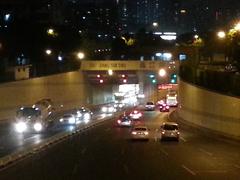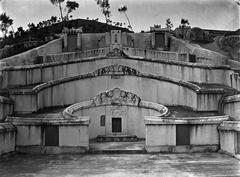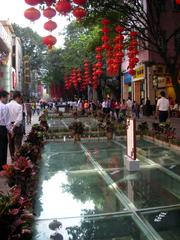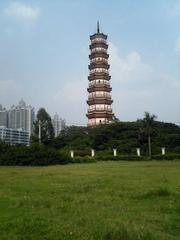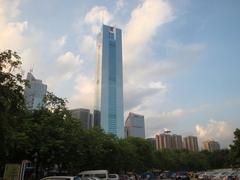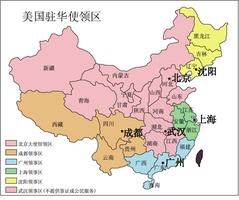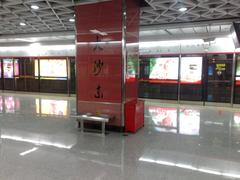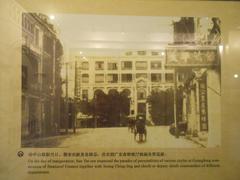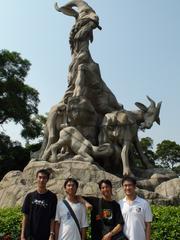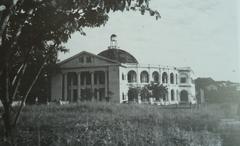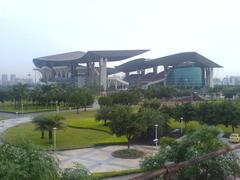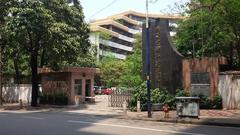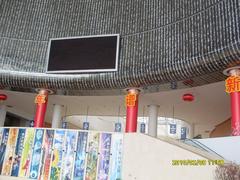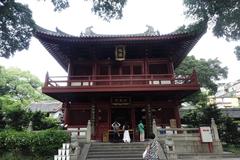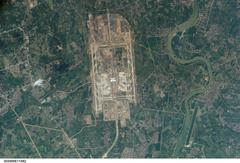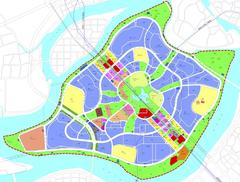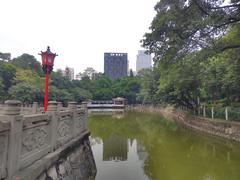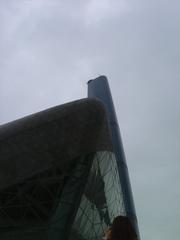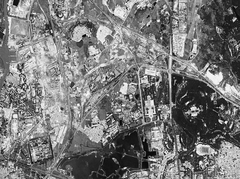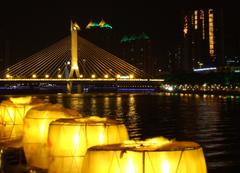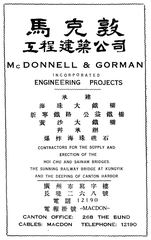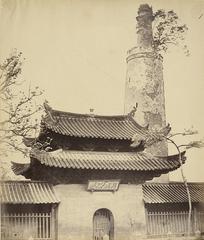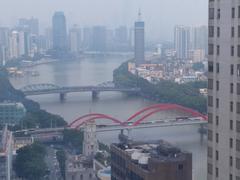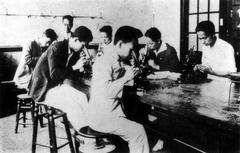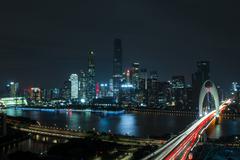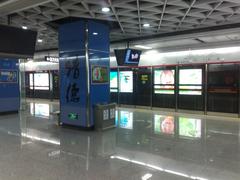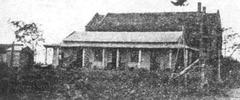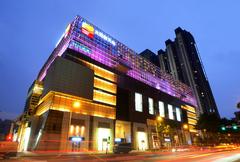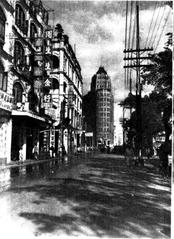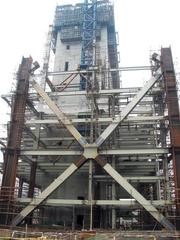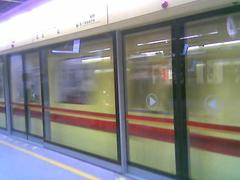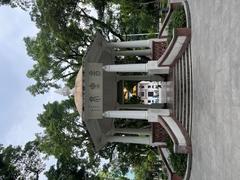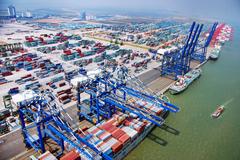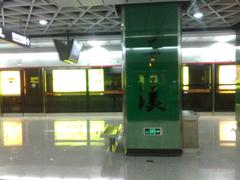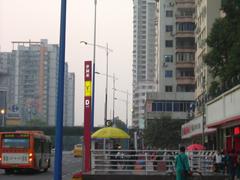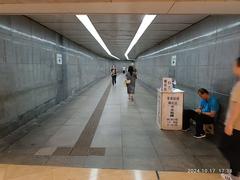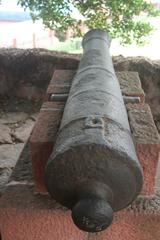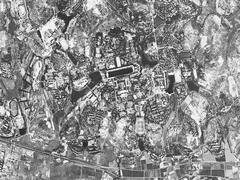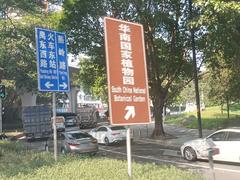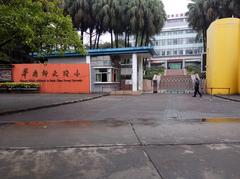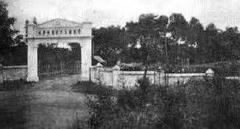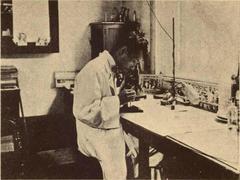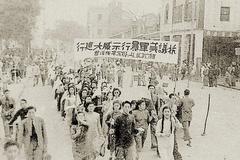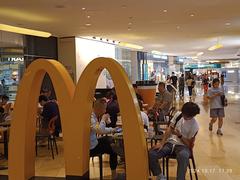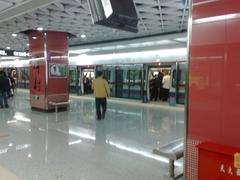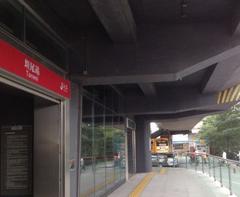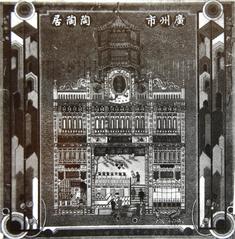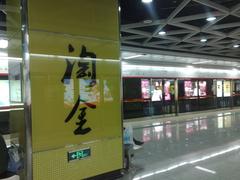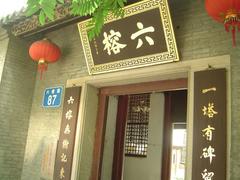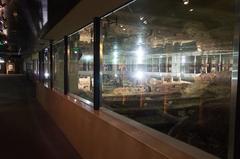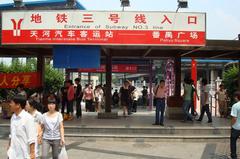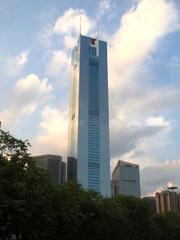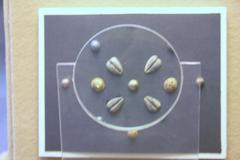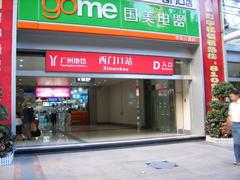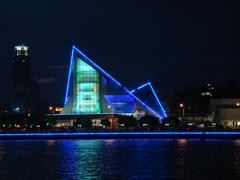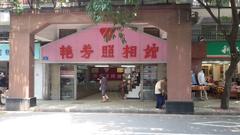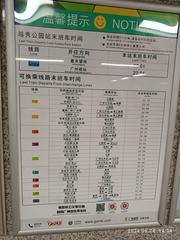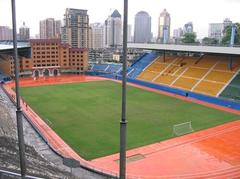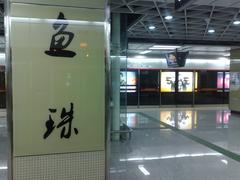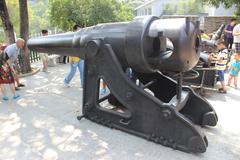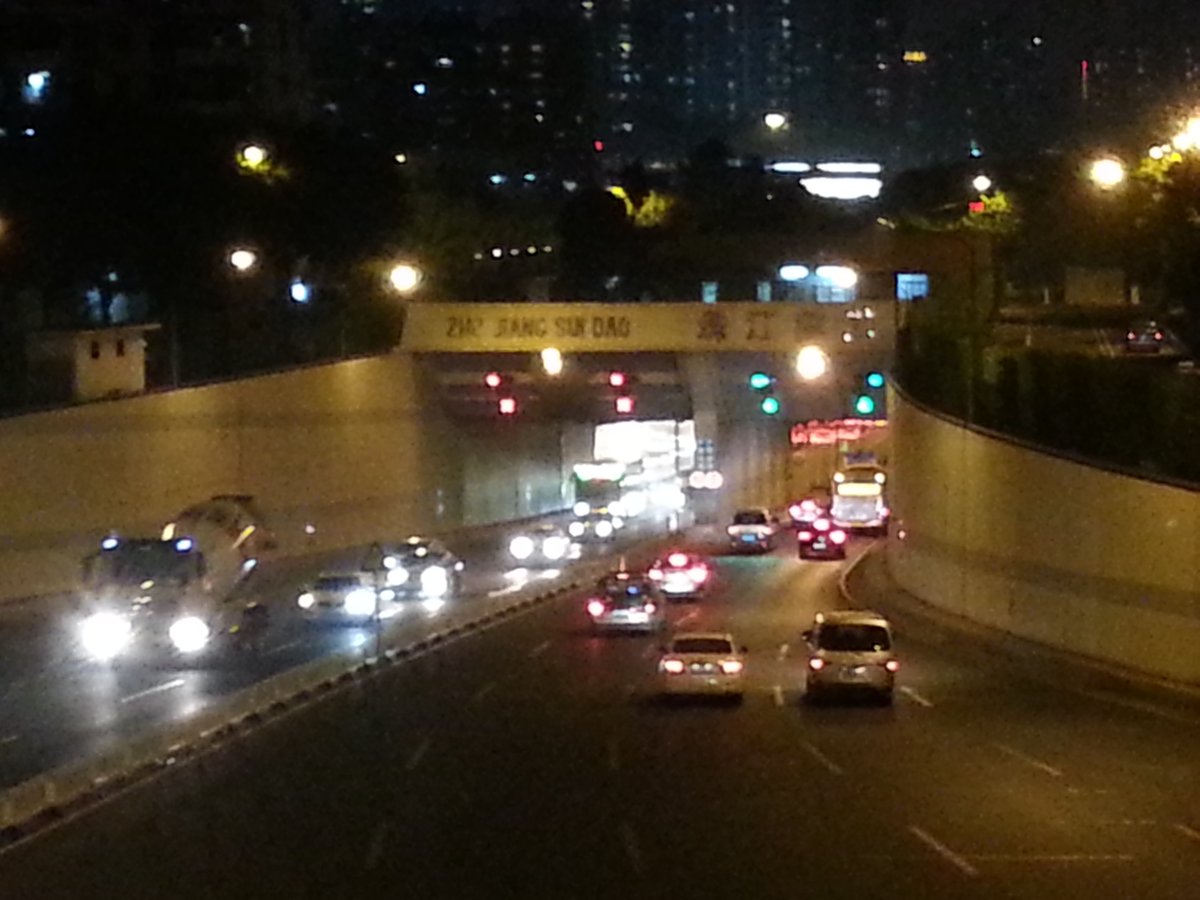
Pearl River Tunnel Visiting Hours, Tickets, and Guangzhou Historical Sites Guide
Date: 14/06/2025
Introduction
The Pearl River Tunnel in Guangzhou, China, stands as a remarkable achievement of modern engineering and urban planning. Spanning beneath the iconic Pearl River, this tunnel connects Haizhu, Panyu, and Tianhe districts, serving as a vital transportation artery that has greatly improved cross-river mobility and reduced surface congestion. Since its completion in 2025, the tunnel has become a symbol of Guangzhou’s rapid economic development and its vision for sustainable, integrated urban growth within the Pearl River Delta (The Broke Backpacker, ITA-AITES 2022 China Report, Guangzhou Travel Guide).
Although the tunnel is not open for pedestrian visits, its presence is celebrated from nearby riverbanks and observation points. These areas offer excellent vantage points for appreciating the tunnel’s entrances and the vibrant cityscape, especially at night when Guangzhou’s skyline is illuminated.
This guide provides a comprehensive overview of the Pearl River Tunnel, including its history, engineering highlights, practical visitor information, nearby attractions, travel tips, and frequently asked questions.
Table of Contents
- Introduction
- Historical Context and Development
- Engineering Highlights
- Visitor Information
- Nearby Attractions & Travel Tips
- Social, Economic, and Environmental Impact
- FAQs
- Visual & Media Resources
- Conclusion
- Sources
Historical Context and Development
Guangzhou’s location along the Pearl River has historically fostered trade and cultural exchange, but also presented significant barriers to urban mobility. As the city expanded, efficient cross-river connectivity became essential. The Pearl River Tunnel was conceived to address these needs, providing a reliable link between key districts and supporting Guangzhou’s emergence as a global metropolis (The Broke Backpacker).
Completed in 2025, the tunnel is the longest immersed tube tunnel in the city, marking a milestone in Chinese tunneling technology and urban infrastructure development.
Engineering Highlights
- Length & Structure: The Pearl River Tunnel stretches up to 5.67 km in total, with an underwater section of approximately 1.4 km constructed using the immersed tube method. The remainder was built with open excavation techniques (ITA-AITES 2022 China Report).
- Construction Methods: Advanced Tunnel Boring Machines (TBMs) and precision-engineered steel-concrete segments were utilized to overcome complex geological conditions beneath the river.
- Safety & Technology: Features include high-capacity ventilation, real-time CCTV monitoring, emergency systems, and advanced lighting for optimal safety and efficient traffic flow.
Visitor Information
Visiting Hours & Accessibility
- Operation: The tunnel operates 24 hours a day and is open to all motor vehicles, including private cars, buses, taxis, and ride-hailing vehicles.
- Pedestrian Access: For safety, pedestrians and cyclists are prohibited from entering the tunnel.
- Accessibility: Vehicles carrying passengers with disabilities can use the tunnel, but there are no pedestrian walkways or cycling lanes.
Tickets & Toll Details
- Toll Fees: Standard cars pay between 8–15 CNY per crossing. Payment options include cash, local transit cards, and electronic toll collection (ETC).
- Taxi Fares: Tolls are typically included in taxi or ride-hailing prices—confirm with your driver to ensure clarity (East China Trip).
- No Tickets for Sightseeing: As the tunnel is not a tourist attraction, there are no entry tickets for visitors or guided tours inside the tunnel.
How to Visit & Best Viewing Points
- Observation Points: Enjoy views of the tunnel entrances and city skyline from:
- Haizhu Square Riverside Promenade
- Canton Tower Park
- Pazhou Island waterfront
- Getting There:
- By Taxi/Ride-Hailing: Easy access from anywhere in the city.
- By Private Car: Use GPS or navigation apps for directions.
- By Bus: Multiple routes cross the tunnel, but plan for possible peak-hour delays (Living Nomads).
- By Metro: Metro Lines 3 and 8 cross the river via tunnels but are separate from the main vehicular Pearl River Tunnel.
Nearby Attractions & Travel Tips
- Canton Tower: A must-visit landmark with observation decks and dining, near the tunnel’s southern exit (Dreams in Heels).
- Zhujiang New Town: Modern CBD with skyscrapers, the Guangdong Museum, and Flower City Square.
- Pearl River Promenade: Ideal for evening walks and river cruises featuring illuminated city views (Travel China Guide).
- Shamian Island: Famous for colonial-era architecture and tranquil parks.
- Haizhu Square: Offers green spaces and riverfront trails.
- Guangzhou Opera House: Renowned for its unique architecture, located near the tunnel’s northern exit.
Travel Tips
- Best Time to Visit: Sunset or nighttime for beautiful city views and vibrant lighting.
- Avoid Peak Hours: Morning (7:30–9:30 AM) and evening (5:00–7:30 PM) rush hours can cause delays.
- Weather: Check for monsoon season impacts (April–September) that may affect traffic (Ruqin Travel).
- Language: Signs are in both Chinese and English. Keep your destination written in Chinese or use a translator app for easier communication.
Social, Economic, and Environmental Impact
The Pearl River Tunnel plays a crucial role in reducing surface traffic, supporting economic integration, and enhancing urban connectivity. Its construction used environmentally sensitive methods to protect the river ecosystem. The tunnel also serves as a catalyst for regional development and is often decorated during citywide festivals, reflecting Guangzhou’s cultural vibrancy (Asia Odyssey Travel).
Frequently Asked Questions (FAQ)
Q: Can pedestrians or cyclists use the Pearl River Tunnel?
A: No, only motor vehicles are permitted for safety reasons.
Q: How much is the tunnel toll?
A: Standard cars pay 8–15 CNY; tolls are included in taxi fares.
Q: Are there visiting hours?
A: The tunnel is open 24/7 for vehicles.
Q: Can I take guided tours inside the tunnel?
A: No, the tunnel is not open for tours, but city sightseeing tours often include nearby riverfront attractions.
Q: Where are the best places to view or photograph the tunnel?
A: Riverbank parks near Haizhu Square and Canton Tower Park provide excellent vantage points.
Q: Is the tunnel open during festivals or at night?
A: Yes, the tunnel operates continuously, and the entrances are illuminated at night for safety and aesthetics.
Visual & Media Resources
For images, videos, and virtual tours, visit Guangzhou’s official tourism websites and social media channels. High-resolution photos of the tunnel entrances, Canton Tower, and Pearl River Promenade offer visual context for planning your visit.
Essential Contacts and Emergency Numbers
- Police: 110
- Fire: 119
- Ambulance: 120
- Tunnel Assistance: Emergency phones are located inside the tunnel (Trip.com).
Conclusion
The Pearl River Tunnel is an engineering landmark that not only improves daily life in Guangzhou, but also enhances the visitor experience by connecting travelers to the city’s premier attractions along the Pearl River. While not accessible for pedestrian tourism, nearby riverfront parks and observation points allow visitors to appreciate the tunnel’s significance and Guangzhou’s dynamic cityscape. For a seamless trip, combine your tunnel-area visit with a tour of Canton Tower, Zhujiang New Town, and the Pearl River Promenade.
For the latest updates and insider tips, follow Guangzhou’s official tourism channels and download travel apps like Audiala. Enjoy exploring the vibrant heart of Guangzhou, where tradition and innovation meet beneath the Pearl River.
Sources
- The Broke Backpacker
- ITA-AITES 2022 China Report
- Guangzhou Travel Guide
- Canton Tower Visitor Information
- Haizhu District Attractions
- Guangzhou Metro Map and Travel Tips
- ScienceDirect Article on Pearl River Tunnel Engineering
- East China Trip
- Living Nomads
- Asia Odyssey Travel
- Ruqin Travel
- Trip.com Guangzhou Travel Guide
- Dreams in Heels
- Travel China Guide
